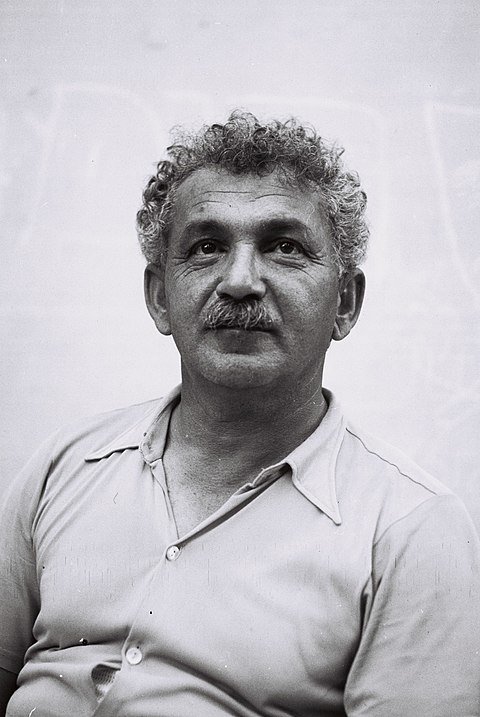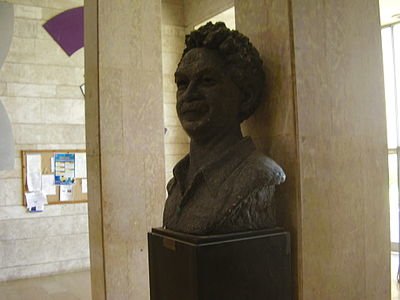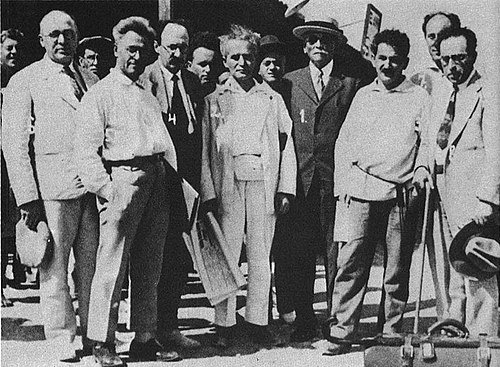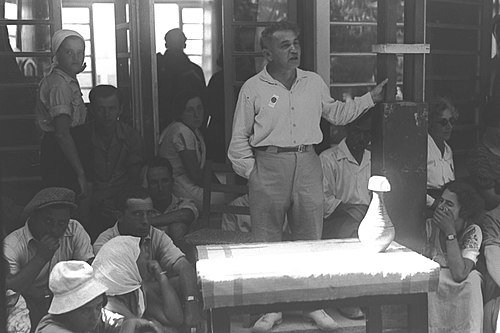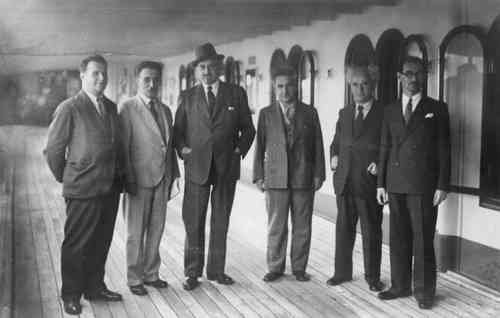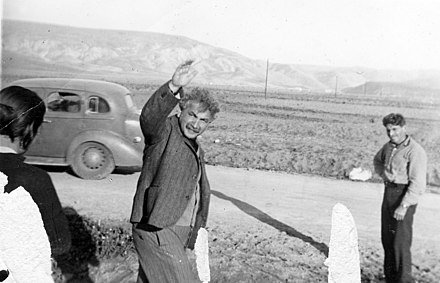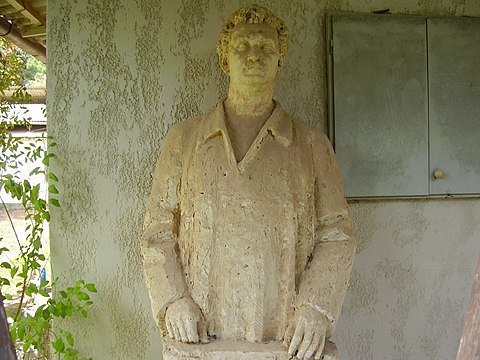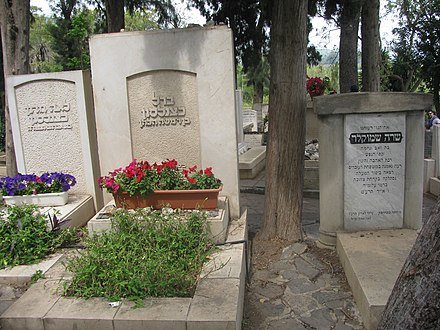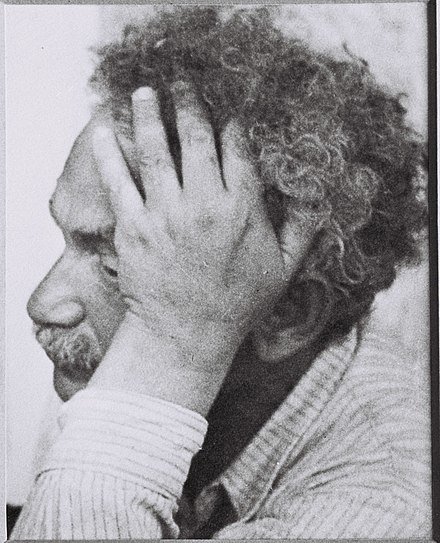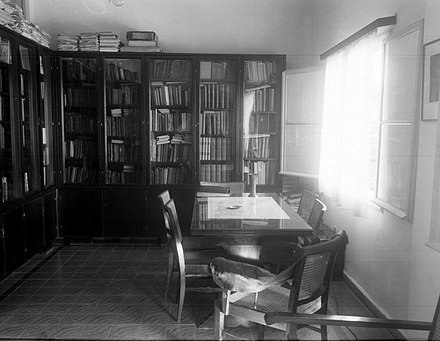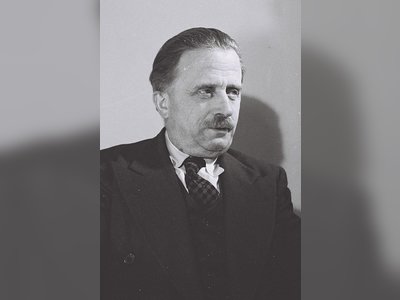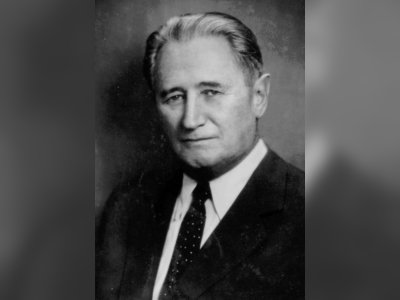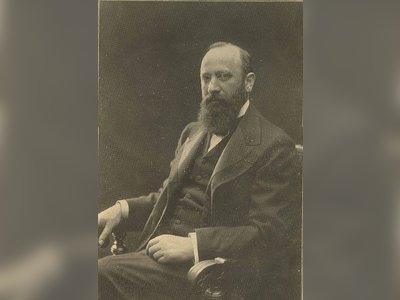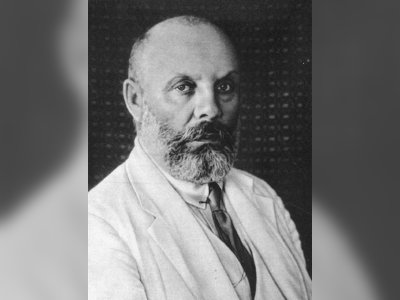Berl Katznelson: A Leader of Labor Movement in Israel
Berl Katznelson was a significant figure in the early Zionist and labor movements in Israel. He dedicated his life to promoting socialist Zionism, workers' rights, and the development of the Jewish homeland in Palestine. His contributions to the labor movement, his writings, and his leadership in the face of challenging times left a lasting legacy in the history of Israel. Katznelson's commitment to social justice and his vision for a just and equitable society continue to inspire people today.
Berl (Barry) Katznelson was born on the 29th of Tevet, 1887, in Bobruisk, a town within the Jewish settlement of the Russian Empire (now in Belarus). He emerged as one of the prominent leaders of the labor movement in Israel, an advocate of socialist Zionism, a journalist, editor, and a founder of labor institutions. He authored the prayer "Yizkor" in memory of fallen Israeli soldiers.
Early Life and Youth in Russia (1887–1909)
Berl Yakov Katznelson was born to Taibel-Reyzl, daughter of Gitl, and Rabbi Yaakov Naametz (or Nimtz). His father, Yaakov, had married Taibel-Reyzl in 1886, just four months after the death of his first wife, Zalda-Rachel, daughter of Rabbi Shmuel. From his first marriage, Yaakov had a son named Chaim. Berl was Taibel's firstborn, and she later gave birth to five more children: Israel (1888), Isser (1891), Benjamin (1895 – who passed away at one year old), Stasia (1891), and Chana (1897). Taibel worked in her husband's ironmongery shop, and their children were cared for by a nanny and housemaid.
Berl's family was considered an intellectually inclined Jewish family. Their home boasted a vast library of Torah literature, and Hebrew newspapers were collected on the rooftop. At the age of eight, Berl received his first Hebrew book from his father, which contained children's stories related to the Ten Commandments. Berl was a sickly child and not a regular attendee of school.
He was never sent to study the Torah, but his father chose private tutors who taught him in a separate room. His close friend during this time was David Shmeoni, with whom he studied in this room. Until the age of ten, he gained most of his education from reading his father's Hebrew books and newspapers and private tutors hired for him.
However, after that, he learned Russian and began reading literature in that language. It was during this time at his father's house that his Zionist-socialist worldview began to develop.
In 1899, his father passed away at the age of 38 due to a lung infection, and his mother had to become the family's breadwinner. In 1902, a large fire devastated their city, destroying their home and his parents' shop.
They became destitute and had to live in his aunt's backyard. Within two years, both his parents passed away. Berl's family home was purchased by a small shop in the market, where he worked all day. Berl was then tasked with overseeing the education of his younger siblings.
During this time, he also worked in the Jewish communal library in Yiddish in the city, established as a counterweight to the city's municipal library aimed at promoting Russian culture. In 1902, he participated through a guest card in a large Zionist conference in Minsk, where he likely first met Chaim Weizmann.
Katznelson belonged to a group of young Jewish men in the settlement who were not allowed to attend gymnasiums and were branded as extremists to obtain government-mandated secondary education certificates. Like his fellow extremists who roamed southern Russia, Katznelson wandered throughout Belarus and Ukraine, occasionally traveling to Poland.
At the age of 16, he earned the title of "house tutor" in Kiev and became a certified teacher. He worked as a tutor for Jewish children from well-off families living in villages, staying in their homes. In 1904, he was present during a pogrom in the town of Smila and actively participated in providing arms for self-defense. In 1905, he officially joined the Zionist Socialist Workers' Party (S.S.).
However, he quickly became disillusioned with the party, particularly due to its uncompromising stance on refraining from using terror as retaliation for attacks on Jews. In 1905, Katznelson began working as a teacher at a school run by the "Disseminators of Enlightenment" society in his city.
After completing his secondary education, he wanted to immigrate to the Land of Israel and work as a laborer. However, before his immigration, he decided to acquire a trade.
Over the course of about three years (1906–1908), he worked in various manual labor jobs and studied at the Jewish vocational school in Odessa, known as "Trod," where he trained as a blacksmith's apprentice.
Before making aliyah (immigration to Israel), he briefly served in the Russian army but was discharged. He then struggled with typhoid fever for several months.
Labor Leader in Israel (1909–1919)
After recovering from his illness, Katznelson traveled to Kiev and, in August 1909, arrived in Odessa, from where he continued his journey to the Land of Israel. He made aliyah in 1909 during the Second Aliyah, a wave of Jewish immigration to Palestine. After a 12-day voyage on the Black Sea, he reached Jaffa on the 21st of Elul. The next day, he met the writer Yosef Haim Brenner in Jaffa.
Katznelson initially struggled to find work in "Ahuzat Bayit," and after Rosh Hashanah, he turned to Petah Tikva. The day after his arrival in Petah Tikva, he left for Rishon LeZion, where he met Brenner again, along with Aaron David Gordon, leaders of the Labor Zionist movement. Katznelson then worked in agriculture, planting trees in the fields near Petah Tikva.
As the agricultural season ended, he left for Jerusalem and joined the workers at Hadera. In Hadera, he worked in a lumber yard and was recruited into the "Labor Battalion." From Hadera, he was sent by the Labor Movement to the Jezreel Valley, where he stayed between Purim and Passover in 1910.
During Passover, he spoke in public for the first time in Israel at the first conference of the Jewish Workers' Association in Rishon LeZion. There, he was accepted as a temporary worker and worked on loading wooden planks onto carts. He participated in the historic harvest that laid the foundation for the establishment of Degania, the first kibbutz in Israel. About a month later, due to illness, he left Degania and returned to Hadera.
At the beginning of the Hebrew year 5671 (1910), he worked for some time on a large farm in Kinneret and then joined the Menahemia settlement, where he worked for one farmer as an individual laborer. However, his tenure there was short-lived, and he was dismissed after just three days. Following his dismissal, he worked at the Kinneret farms and was involved in organizing a labor strike. He was one of the ten workers who formed the "Klandia Group" in Hadera in 1914.
With the outbreak of World War I in 1914, a severe economic crisis hit the Jewish settlements in Palestine. Many immigrants returned to their home countries, while those who stayed suffered from hunger, unemployment, and persecution. The vineyards in the Jezreel Valley were abandoned, and the economic situation of the Jewish workers was dire.
Katznelson and his friends joined the "Levanah" group, which set out to create a self-sustaining kibbutz based on cooperative principles. However, they faced many difficulties, including opposition from the local population and the authorities, and the project ultimately failed.
Despite these challenges, Katznelson continued to be an active and dedicated leader in the labor movement in Israel during these turbulent years. He wrote articles and essays advocating for socialist Zionism and workers' rights, and he was involved in labor organizing and activism.
He was also a strong proponent of Jewish self-defense and played a role in the establishment of defense organizations in the Jewish settlements to protect against attacks from Arab militias.
- ברל כצנלסוןhe.wikipedia.org
